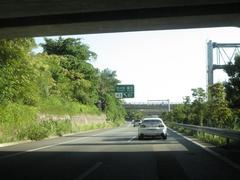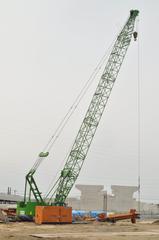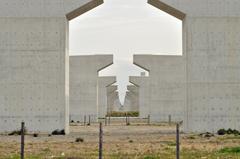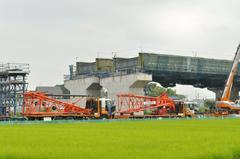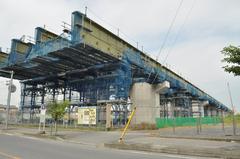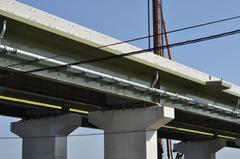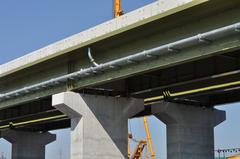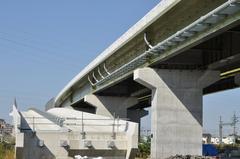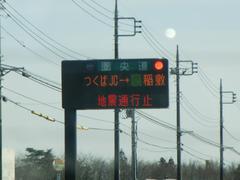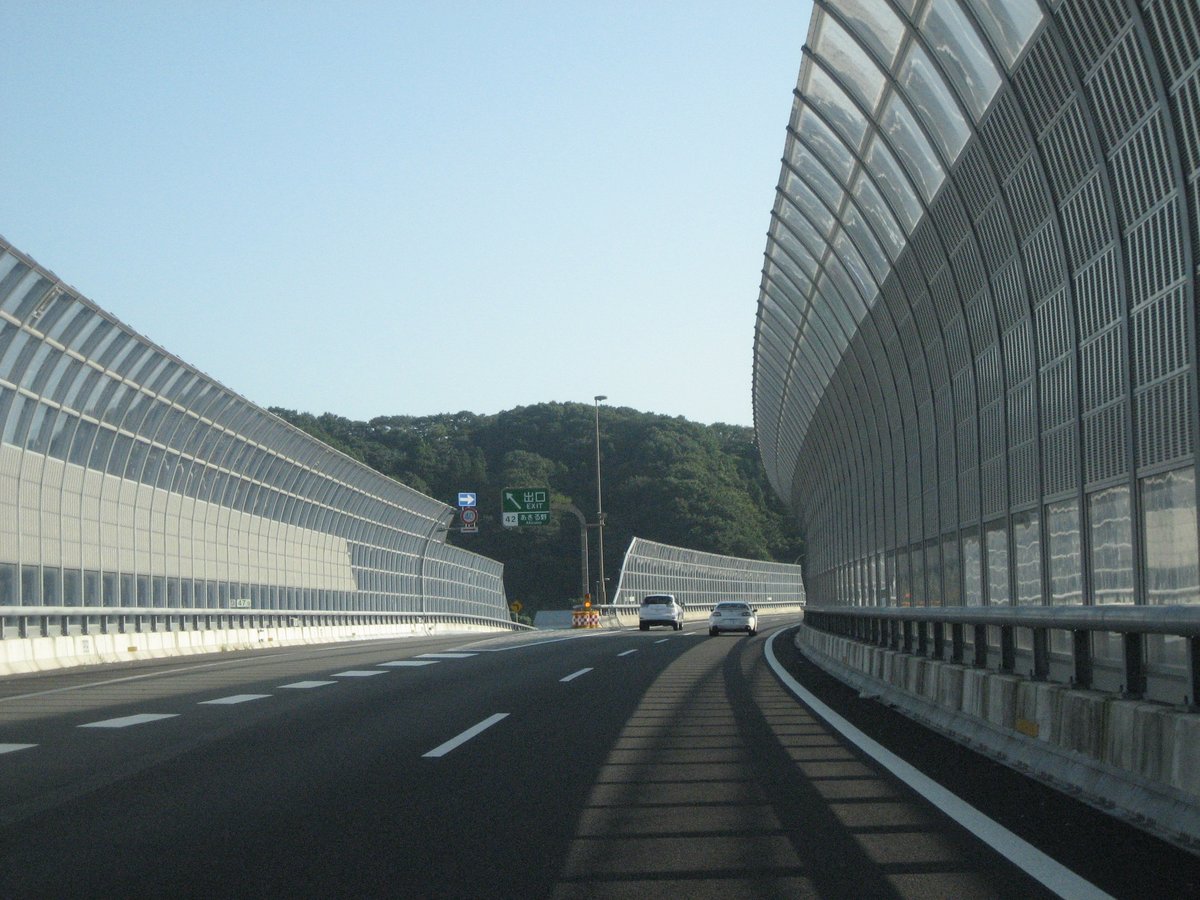
Ken-O Expressway Tokyo: Visiting Hours, Tickets, and Travel Guide
Date: 14/06/2025
Introduction
The Ken-O Expressway, officially the Metropolitan Inter-City Expressway (首都圏中央連絡自動車道, Shutoken Chūō Renraku Jidōshadō), forms Tokyo’s outermost ring road, connecting Tokyo with Kanagawa, Saitama, Chiba, and Ibaraki. Conceived to alleviate congestion and enhance connectivity, this expressway is now a cornerstone of Greater Tokyo’s transport infrastructure, integrating smart technologies, supporting economic activity, and offering access to a range of cultural and natural attractions (MLIT, 2021).
This comprehensive guide explores the Ken-O Expressway’s history, technological advancements, toll structure, visitor tips, and its broader role in Tokyo’s social and economic landscape. Whether you are a commuter, logistics operator, or traveler, understanding the Ken-O Expressway will help you navigate Tokyo’s outer regions efficiently.
Table of Contents
- Introduction
- Historical Development
- Technological Innovations & Infrastructure
- Practical Information for Visitors
- Route Details & Key Interchanges
- Economic, Social, and Disaster Resilience Significance
- Travel Tips & Nearby Attractions
- Frequently Asked Questions (FAQ)
- Summary and Final Tips
- References
Historical Development
Origins and Urban Expansion
Tokyo’s post-Meiji Restoration urban growth outpaced its existing road network, leading to chronic congestion. To address this, three concentric ring roads were planned: the Central Circular Route, Tokyo Gaikan, and Ken-O Expressway. The Ken-O, designated as National Route 468 and marked as C4, was developed to link outer municipalities and support the city’s expanding periphery (MLIT, 2021).
Planning, Construction, and Milestones
Construction began in the 1990s, with phased openings connecting major expressways and key infrastructure like Narita and Haneda airports. Notable milestones include:
- 2018: Enhanced east-west connectivity with the Shin-Tōmei Expressway.
- 2019: Smart interchange at Ōamishirasato opened, showcasing AI-driven management.
- 2024 (expected): Completion of the Chiba Prefecture gap, creating a complete ring.
Technological Innovations & Infrastructure
Smart Traffic Management
The Ken-O Expressway employs IoT and AI to monitor conditions, adjust speed limits, and provide real-time updates via electronic signs. Smart interchanges and ETC2.0 integration enable smoother and safer journeys.
Engineering & Environmental Measures
Innovative tunneling, durable materials, and eco-conscious construction are hallmarks of the Ken-O. Environmental features include noise barriers, green landscaping, and technologies that cut CO₂ emissions by about 300,000 tons annually (MLIT, 2021).
Network Integration
The expressway links Tokyo’s major radial expressways and infrastructure such as the Tokyo Bay Aqua-Line, directly supporting logistics, airport access, and regional growth (NEXCO East CSR Report 2023).
Practical Information for Visitors
Toll Fees & Payment Methods
Tolls are distance- and vehicle-based. Electronic Toll Collection (ETC) is strongly recommended for fast, cashless travel and discounts. Tourists can rent ETC cards from car rental agencies (Reddit: JapanTravel). Cash is also accepted at toll booths.
For up-to-date toll rates, consult NEXCO Central.
Operating Hours & Facilities
The Ken-O Expressway operates 24/7. Service areas (SAs) and parking areas (PAs) are spaced every 20–30km, offering food, fuel, restrooms, EV charging, and barrier-free amenities. Most SAs are open round-the-clock, but some facilities may have limited hours.
Route Details & Key Interchanges
Alignment and Coverage
When fully complete, the Ken-O will span approximately 300 km, circling Tokyo at a distance of 40–60 km from the city center and linking Tokyo, Kanagawa, Saitama, Chiba, and Ibaraki (MLIT, 2021).
Major Junctions
- Chigasaki JCT: Connects with Tōmei Expressway (Kanagawa/Shizuoka)
- Atsugi JCT: Shin-Tōmei and Odawara-Atsugi Road
- Hachioji JCT: Chūō Expressway (western Tokyo/Yamanashi)
- Kawagoe JCT: Kan-Etsu Expressway (Saitama/Niigata)
- Tsukuba JCT: Jōban Expressway (Ibaraki)
- Narita JCT: Direct to Narita Airport via Higashi-Kantō
- Ichihara JCT: Tateyama Expressway (Chiba)
Road Design
Standard configuration is two to three lanes per direction (expanding to four near high-traffic zones), engineered for up to 100 km/h, with frequent signage in multiple languages (NAVITIME).
Economic, Social, and Disaster Resilience Significance
Economic Impact
The Ken-O Expressway has spurred regional investment, industrial development, and logistics efficiency. By serving as a bypass to central Tokyo, it reduces freight travel times by up to 30–40%, with predictable tolls for logistics operators (MLIT, 2016 White Paper).
Social Benefits
The expressway improves access to healthcare and education, shortens commutes, and enhances quality of life. Service areas are inclusive, with universal washrooms and accessible parking (NEXCO East CSR Report 2023).
Disaster Resilience
Built to remain operational during earthquakes, floods, and typhoons, the Ken-O Expressway provides redundancy in emergencies. Selected rest areas serve as disaster response bases, and capacity upgrades ensure rapid recovery (NEXCO East Press Release, 2025). Real-time information and disaster drills further support resilience.
Travel Tips & Nearby Attractions
- Best Times: Avoid weekday rush hours (7–9 AM, 5–7 PM) and Japanese holidays (Golden Week, Obon, New Year’s).
- Navigation: Use GPS or apps with ETC data for live traffic updates.
- Nearby Attractions: Access Kawagoe’s “Little Edo”, Naritasan Shinshoji Temple, Tama’s hiking trails, and Chiba’s coastal parks (Go Tokyo).
- Rest Areas: Don’t miss Ebina SA and Miyoshi PA for local specialties and cultural experiences (Japan Guide).
Frequently Asked Questions (FAQ)
Q: How are tolls calculated?
A: By distance and vehicle type; see NEXCO Central for details.
Q: Can tourists rent ETC cards?
A: Yes, from major car rental agencies and airports.
Q: Are the service areas open 24/7?
A: Most are, but confirm individual facility hours.
Q: Is the expressway accessible for international drivers?
A: Yes, with an international driving permit.
Q: Is the Ken-O Expressway resilient against disasters?
A: Yes, it’s engineered for rapid recovery and supports emergency operations.
Summary and Final Tips
The Ken-O Expressway is a modern marvel, boosting Tokyo’s connectivity, economy, and resilience. With ETC-compatible tolls, clear signage, and accessible rest areas, it is user-friendly for both locals and international visitors. The expressway also opens up a wealth of attractions—from historic Kawagoe to seasonal flower parks and regional festivals—making it a gateway to Tokyo’s diverse surroundings (Go Tokyo Official Guide; Japan Guide).
For the latest tolls, traffic, and route updates, check official resources like NEXCO Central and NAVITIME Japan. Planning your drive around peak hours and using navigation tools will ensure a smooth journey. Download the Audiala app for real-time updates and travel tips.
Embark on your Ken-O Expressway adventure and experience Greater Tokyo’s vibrant blend of innovation, tradition, and natural beauty (NEXCO Central; NAVITIME Japan).
References
- MLIT, 2021, Ministry of Land, Infrastructure, Transport and Tourism
- Japan Guide, 2025, Ken-O Expressway Travel Tips
- NEXCO East CSR Report, 2023, East Nippon Expressway Company
- NEXCO East Press Release, 2025, Kanto Region Infrastructure Updates
- Go Tokyo Official Guide, Tourism Information
- CAA Qatar, 2024, Narita Airport Expansion
- NAVITIME Japan, Route Maps and Travel Info
- NEXCO Central Toll Information

